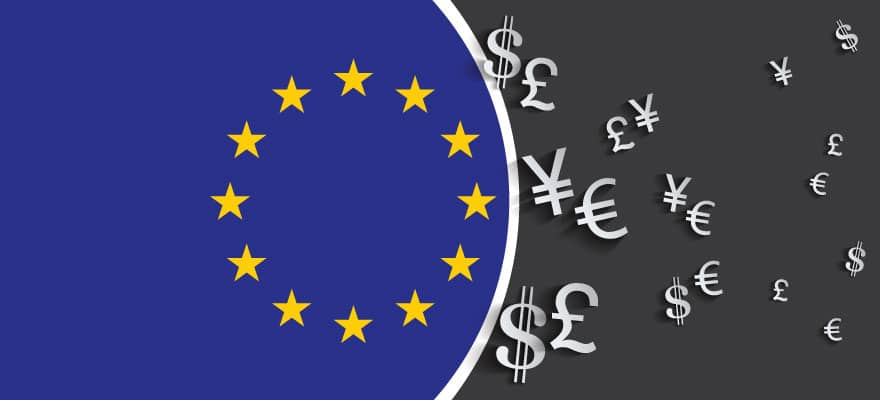This article was written by Konstantin Rabin of https://forex-library.com/, a resource dedicated to FX literature and reviews.
The recent news coming from the European regulators has certainly shaken the industry. It is clear that such countries as Belgium generate only fractional volumes, and losing clients in such countries would not hurt the industry at all. However, the main threat comes from a potential implementation of the same practice by larger EU member states, such as France and Germany. Next to this, most of the legal updates in the financial and fintech areas (like MIFID II or PSD II) are actually driven by the EU parliament, whose meetings are held in Brussels. Hence, there is a small likelihood that the EU parliament will actually adopt Belgium’s model.
Well, in this article we are not going to discuss whether a complete ban on FX and CFDs will happen in Europe. Neither are we going to talk about whether it is right or wrong. What we will do is assume that FX and CFD brokerage services are prohibited throughout the EU. Then we are going to predict possible responses of the brokers, highlight the best one, and examine the most painless ways to stay in business.
Go unregulated
FX trading is prohibited in many countries. For example, if an Indian trades any major FX pair, he or she is committing a Non-Bailable Offence. However, it does not hold brokers back from servicing the clients there. How is that possible? Simply by having a company registered in the offshore zone. Well, the same case could apply to EU countries under the prohibition. Established brokers could easily open an unregulated entity (if they don’t have one already), and serve EU clients.
Going unregulated is, perhaps, the simplest way to continue operating, yet it is a lose-lose-lose scenario for the brokers, the regulators, and the clients. Many established firms would lose a competitive edge over smaller brokers that never have been regulated, regulators won’t be able to oversee the brokers and would not hold the required capital, and ultimately, the clients would not be able to file complaints.
Switching geographies
For most of the regulated brokers, EU countries represent the largest market. The reason for this is simple. EU nationals are well-educated about financial trading, hence, brokers need to capture the clients rather than create the market. Still, there are quite a few unexplored geographies where the market for FX and CFDs can be created. It does seem like Latin America has been neglected by the vast majority of the FX brokers and this continent might be the next best focus.
Nevertheless, completely dropping EU clients may just not be an option for the brokers that onboard thousands of clients and are already used to generating millions in revenues.
Going multi-asset
In the case of FX and CFDs being prohibited in the EU, it does not mean that brokerages should stop working. It only means that a broker is no longer able to offer some of the assets. And offering multiple asset classes is an ultimate answer. When offering such instruments as futures and equities, a broker can continue working in the same area and servicing the same clients. Of course, the profit margin may decrease substantially due to a lower leverage, yet a bird in the hand is better than two in the bush.
Next to this, there is some probability of having the advertising of FX and CFDs banned, while keeping the trading of these assets fully legitimate. In this is the case, then advertising stocks and futures and up selling FX and CFDs might be the best possible case for FX brokers. Let’s learn more about the possible options of converting your retail FX brokerage into a multi-asset broker.
MetaTrader 5
Some brokers have already launched live trading with MT5. Most of them are still postponing the decision. Even though I am not a big fan of MT5, the main advantage this platform has is the ability to provide multiple assets for trading. Another advantage of going with MT5 is that it feels natural for MT4 traders.
Well, that’s probably the whole list of MT5 advantages. I do not want to make a hate-speech about MT5, but its disadvantages are clear: lack of independence from a vendor, no customization, limited features, close-minded policy and the lack of updates. That is why many MT4 brokers may go back to the platforms market to look for another, a better-fitted solution. So let’s take a closer look at alternatives.
Interactive / Saxo white label
Going with a certain white label solution is certainly an option, yet it has not gained much traction in the retail FX industry by now. The reason for this is also simple. Brokers do not really want to 'feed' their competitors. Hence, a conflict of interest is, perhaps, the most prominent disadvantage of going with a white-label from Interactive Brokers, Saxo Markets or any similar company.
Apart from that, a broker that employs a certain white-label solution would need to mark up the spreads or charge an additional commission, this way the competition gets even harder.
While such solutions can be perfect for banks that look for an easy way to establish a financial trading branch, retail brokers may not appreciate allocating a part of their core business to another brokerage.
Also, sometimes the technology of a white label provider may not be the most suitable one. For example, TWS from Interactive Brokers does seem like a platform that is hard for the beginners to pick up.
The main advantage of going with a white label platform from such brokers is that there is no need to sign deals with Liquidity providers and get them integrated. Once a broker gets a white label, it just needs to integrate the white label with its internal systems.
Protrader
Protrader is an independent third-party trading software that supports various types of asset classes, such as spot FX, CFDs as well as futures, equities or vanilla options. It is also a liquidity-neutral software. It may sound similar to MT5, however, those are the only similarities. In fact, Protrader comes with a much sharper design, it receives updates more frequently, and it comes with a way better support. With this platform, it is possible to actually get some customization.
Apart from that, if a broker has to connect LPs to MT5, it will need to either work this out internally or outsource the whole process. With Protrader you can get the integration of Liquidity Providers done by Protrader’s staff.
Similar to any other standalone software, Protrader requires a broker to acquire and maintain infrastructure. This, of course, results in additional costs. Hence, it is safer for smaller-size brokers to get a white-label solution under a SaaS model. Nevertheless, by implementing Protrader platform, a broker may not only prepare for a possible ban on OTC instruments (FX and CFDs) in the EU, but can also diversify its current services with another platform.
How about cTrader?
Even though I like cTrader a lot, I have not heard about any financial institutions integrating any assets other than FX and CFDs into this platform. Perhaps it is possible to do so, yet I am sure that this option requires more clarification.
The final thought
It is hard to predict whether the ban on FX and CFDs in Europe will take place anytime soon or at all. However, it is clear that OTC markets will become more regulated and, in some countries, promoting such products will no longer be possible. By implementing a multi-asset platform, a broker can be prepared for whatever outcomes the future brings.

















